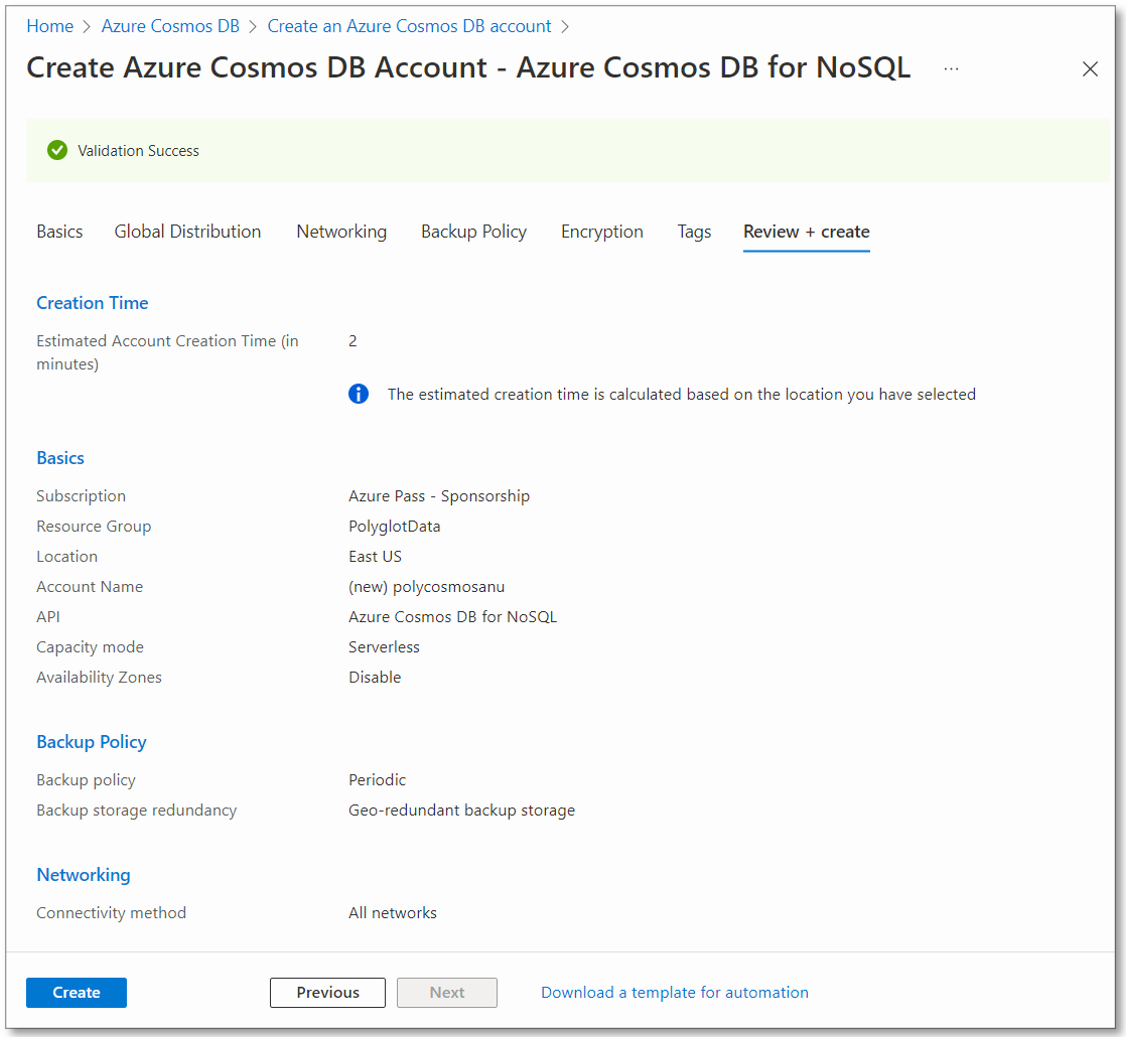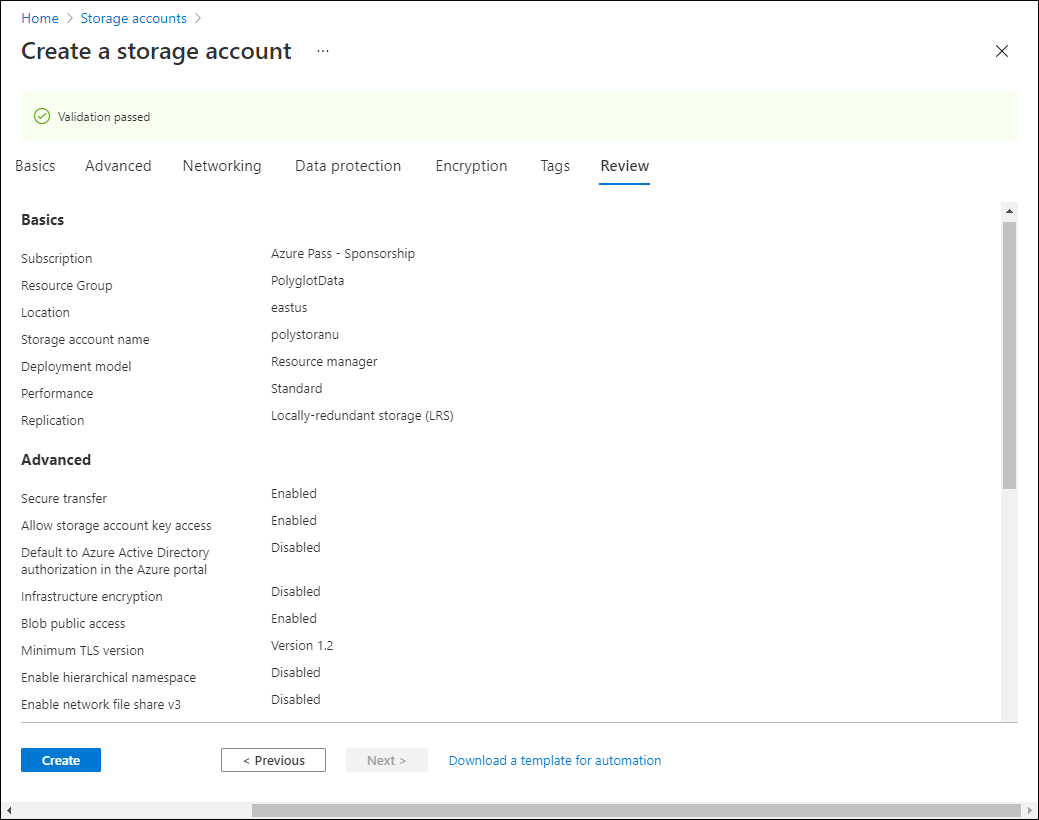Lab 1: Creating data store resources in Azure
Task 1: Open the Azure portal
On the taskbar, select the Microsoft Edge icon.
In the open browser window, browse to the Azure portal (portal.azure.com), and then sign in with the account you will be using for this lab.
Note: If this is your first time signing in to the Azure portal, you'll be offered a tour of the portal. Select Get Started to skip the tour and begin using the portal.
Task 2: Create an Azure Cosmos DB account resource
In the Azure portal, use the Search resources, services, and docs text box to search for Azure Cosmos DB and then in the list of results, select Azure Cosmos DB.
On the Azure Cosmos DB blade, select + Create.
On the Select API option blade, select Create in the Azure Cosmos DB for NoSQL box.
On the Basics tab of the Create Azure Cosmos DB Account - Azure Cosmos DB for NoSQL page, perform the following actions, and then select Review + Create:
| Setting | Action | | -- | -- | | Subscription list | Retain defaults | | Resource group section | Select Create new | | Name text box | Enter Polyglotdata and select OK | | AccountName text box | Enter polycosmos[yourname] | | Location drop-down list | Select an Azure region that is closest to the location of your lab computer and where you can create a Cosmos DB account | | Capacity mode section | Select Serverless |
The following screenshot displays the configured settings on the Create Azure Cosmos DB Account - Azure Cosmos DB for NoSQL page.

On the Review + Create tab of the Create Azure Cosmos DB Account - Azure Cosmos DB for NoSQL page, review the options that you selected during the previous steps.
Select Create to create the Azure Cosmos DB account by using your specified configuration.
Note: Wait for the creation task to complete before you move forward with this lab.
Select Go to resource.
On the Azure Cosmos DB account blade, find the Settings section, and then select the Keys link.
In the Keys pane, on the Read-write Keys tab, record the values of the URI, PRIMARY KEY, and PRIMARY CONNECTION STRING text boxes. You'll use these values later in this lab.
Task 3: Create an Azure Storage account resource
In the Azure portal, use the Search resources, services, and docs text box to search for Storage accounts and, in the list of results, select Storage accounts.
On the Storage accounts blade, select + Create.
On the Basics tab of the Create a storage account blade, perform the following actions, and then select Review:
| Setting | Action |
| -- | -- |
| **Subscription** list | Retain defaults |
| **Resource group** section | Select **PolyglotData** |
| **Storage account name** text box | Enter **polystor**_[yourname]_ |
| **Region** drop-down list | Select the same region where you created the Cosmos DB account earlier in this exercise |
| **Performance** section | Select **Standard** |
| **Redundancy** drop-down list | Select **Locally-redundant storage (LRS)** |
The following screenshot displays the configured settings on the Create a storage account blade.

On the Review tab of the Create a storage account blade, review the options that you selected during the previous steps.
Select Create to create the storage account by using your specified configuration.
Note: Wait for the creation task to complete before you proceed with this lab.
Review
In this exercise, you created the Azure resources that you'll need for the polyglot data solution you'll implement in this lab. The Azure resources you created include an Azure Cosmos DB account and an Azure Storage account.